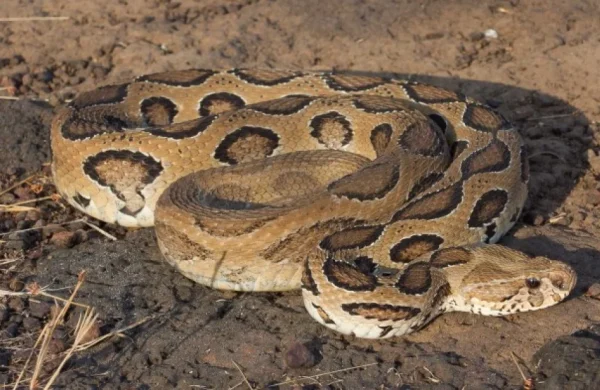Russell’s Viper misconceptions spread panic in Bangladesh
- Update Time : Friday, June 21, 2024

- It is not the most venomous of snakes
- Most deaths occur due to delay in treatment
Staff Correspondent:
Recently, misinformation about Russell’s Viper has been circulating on social media, leading to widespread panic among the public in Bangladesh.
These misleading posts, often sourced from different parts of the world, have generated significant misconceptions about the snake, its danger, and its prevalence.
Russell’s Viper is a venomous snake primarily found in India, Taiwan, and Indonesia, but it is also present in Bangladesh.
Russell’s Viper is a highly venomous snake in the family Viperidae native to the Indian subcontinent and one of the big four snakes in India. The species is named after Patrick Russell, a Scottish herpetologist who first described many of India’s snakes in the 1790s.
It thrives in open environments such as farmlands, where human interaction is frequent due to the abundance of its rodent prey.
The snake can grow up to 1.5 meters and is identified by its distinctive reddish-brown spots outlined in black and white.
Contrary to popular belief, Russell’s Viper is not the most venomous snake in the world.
The Black Mamba and Puff Adder are among the world’s most dangerous snakes due to their potent venom and aggressive nature.
Russell’s Viper, while also highly venomous and responsible for numerous snake bite incidents in India, is considered less aggressive.
According to Md Motalib Al Momin, the Dhamrai Upazila forest officer, it does not even rank in the top 30 most venomous snakes.
Most fatalities occur due to delayed medical treatment, and around 70% of victims survive if treated promptly. With proper care, the survival rate can reach 90%.
Russell’s Viper tends to avoid human contact and does not actively seek to bite people.
Most bites occur when humans inadvertently step on or try to handle the snake.
Interestingly, these snakes are quite sedentary, often staying in one place for several days unless disturbed.
Reports indicate that Russell’s Viper is present in at least 25 districts across Bangladesh, including Khulna, Barisal, Patuakhali, Chandpur, and areas around Dhaka.
This year, 10 people have died due to its bites, mainly farmers and fishermen who encounter the snake in their daily activities.
One of the major challenges in the country is the insufficient supply of effective antivenom.
The antivenom currently used is designed for Indian snake variants, which may not be fully effective for local viper species.
To address this situation, researchers at Chittagong University are developing a specific antivenom for Russell’s Viper. This development is crucial for providing effective treatment in high-risk areas.
The killing of natural predators like foxes, monitor lizards, and mongooses by villagers has disrupted the ecological balance, leading to an increase in the snake population.
These predators play a vital role in controlling the snake population, and their decline has indirectly contributed to more human-snake encounters.
To counter the misinformation and panic, forest officer Md Motalib Al Momin and other experts have been actively disseminating accurate information.
The government is also working to distribute antivenom more effectively in high-risk areas.
Additional Director General of the Department of Health, Professor Dr Ahmedul Kabir, assured that efforts are ongoing to ensure antivenom availability across the country.

















